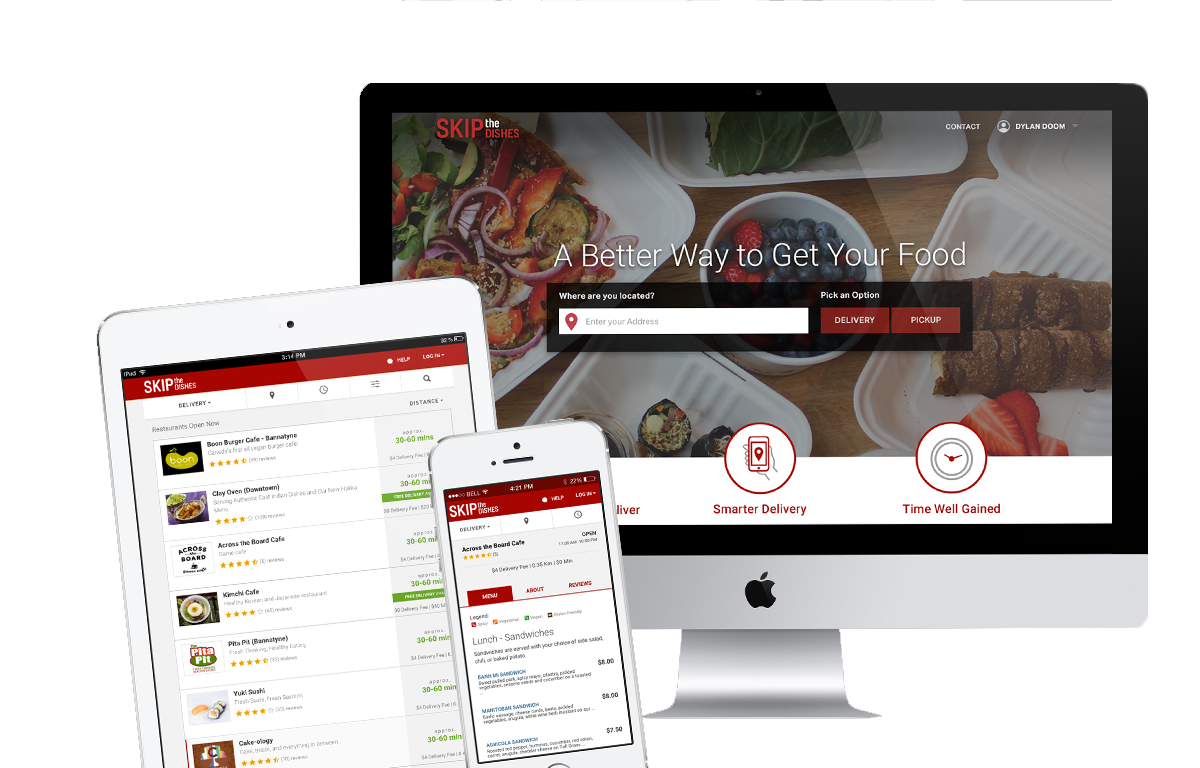Context
SkipTheDishes is a Canadian food-delivery startup that, at the time I joined, was transitioning from an establishing local mid-market operation into a rapidly scaling national service. They were expanding into new cities, onboarding restaurants at high speed, and trying to turn a chaotic mix of spreadsheets, emails, and legacy tools into a cohesive delivery platform.
The company needed UX support because:
- Core workflows for couriers, restaurants, and customers were inconsistent or undefined
- Internal tools were functional but fragmented
- Visual design patterns didn’t exist yet
- Product teams needed structure, process, and a clearer understanding of user behaviour
The company needed UX support because:
- Core workflows for couriers, restaurants, and customers were inconsistent or undefined
- Internal tools were functional but fragmented
- Visual design patterns didn’t exist yet
- Product teams needed structure, process, and a clearer understanding of user behaviour
My Role
UX Designer (multi-hat mode): interaction design, research, visual/UI, prototyping, and establishing early design standards across customer, courier, and partner-facing tools.
Key Contributions
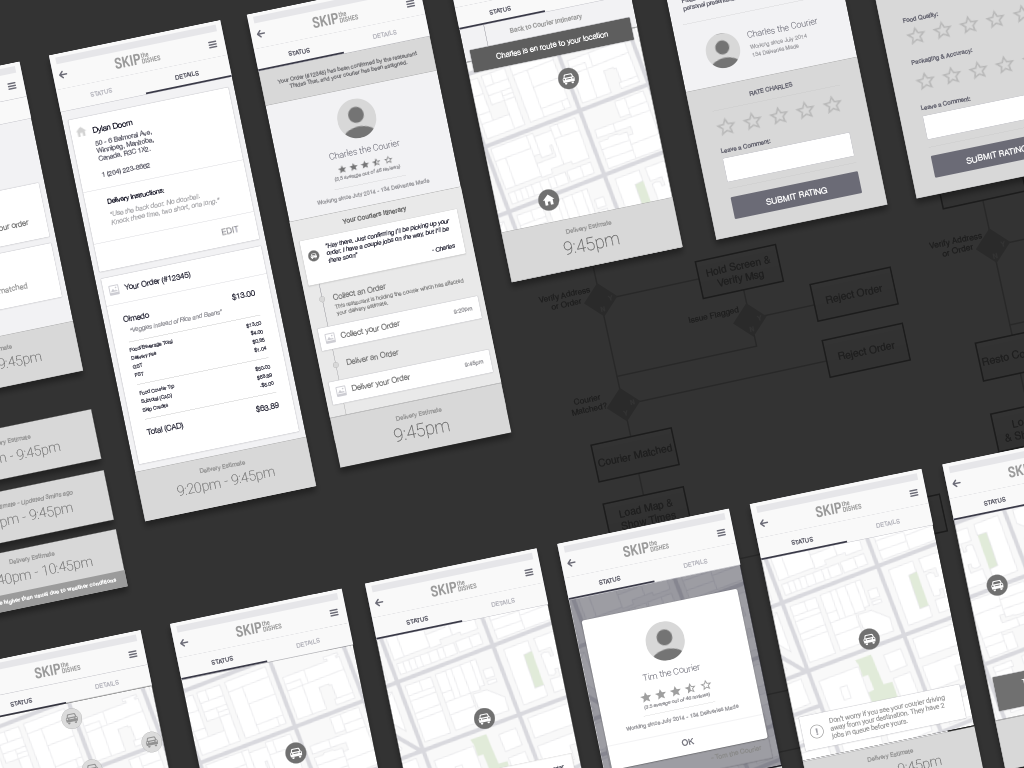
Mapping and Fixing the Courier Workflow
Couriers were struggling with unintuitive routing, unclear task sequencing, and a lack of real-time feedback. Support teams were overwhelmed with calls.
Mapping and Fixing the Courier Workflow
Impact:
- Shadowed couriers on real deliveries to map pain points
- Created end-to-end journey maps and task flows
- Designed clearer UI patterns for job acceptance, routing, and pickup/drop-off states
- Prototyped a simplified delivery-status system that reduced cognitive load
- Improved courier efficiency, reduced support tickets, and helped the logistics team scale operations with more predictable courier behavior.
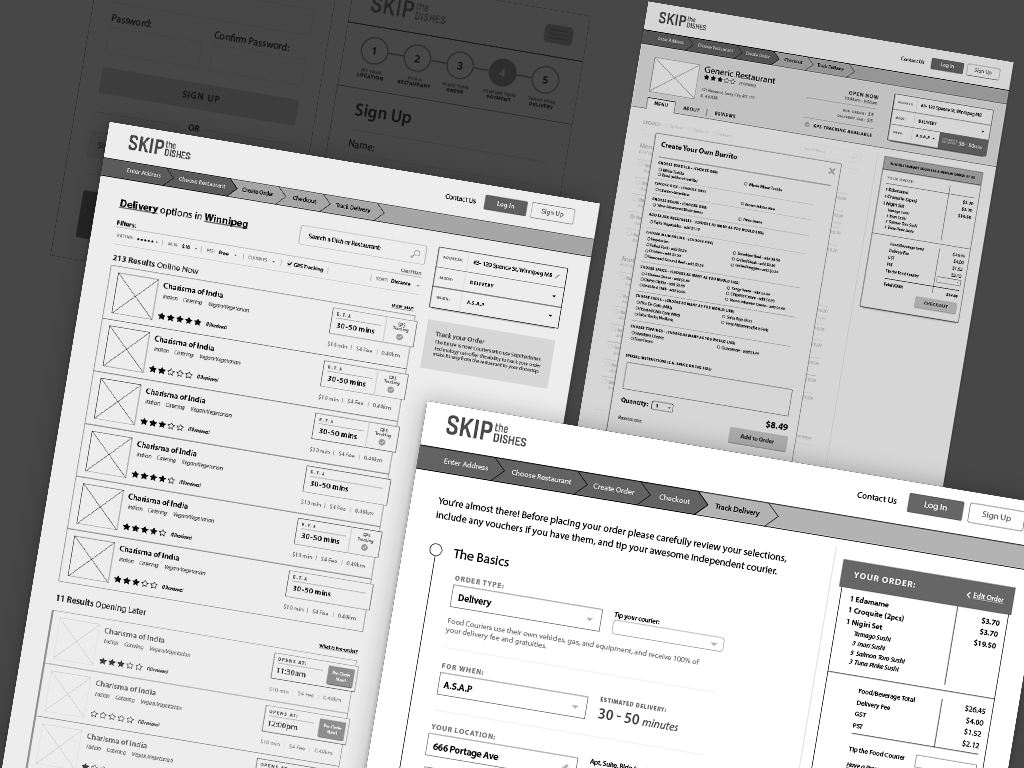
Redesigning Restaurant Tools to Streamline Onboarding & Order Management
Restaurants used outdated dashboards that made onboarding slow and order management error-prone.
Mapping and Fixing the Courier Workflow
Impact:
- Consolidated scattered workflows into a single restaurant portal
- Designed new onboarding screens, menus, and reporting dashboards
- Improved menu-editing tools so restaurants could update items without contacting support
- Introduced design patterns that later became foundations for their partner tools
- Faster onboarding times, fewer menu-related support requests, and a more consistent restaurant experience across cities.
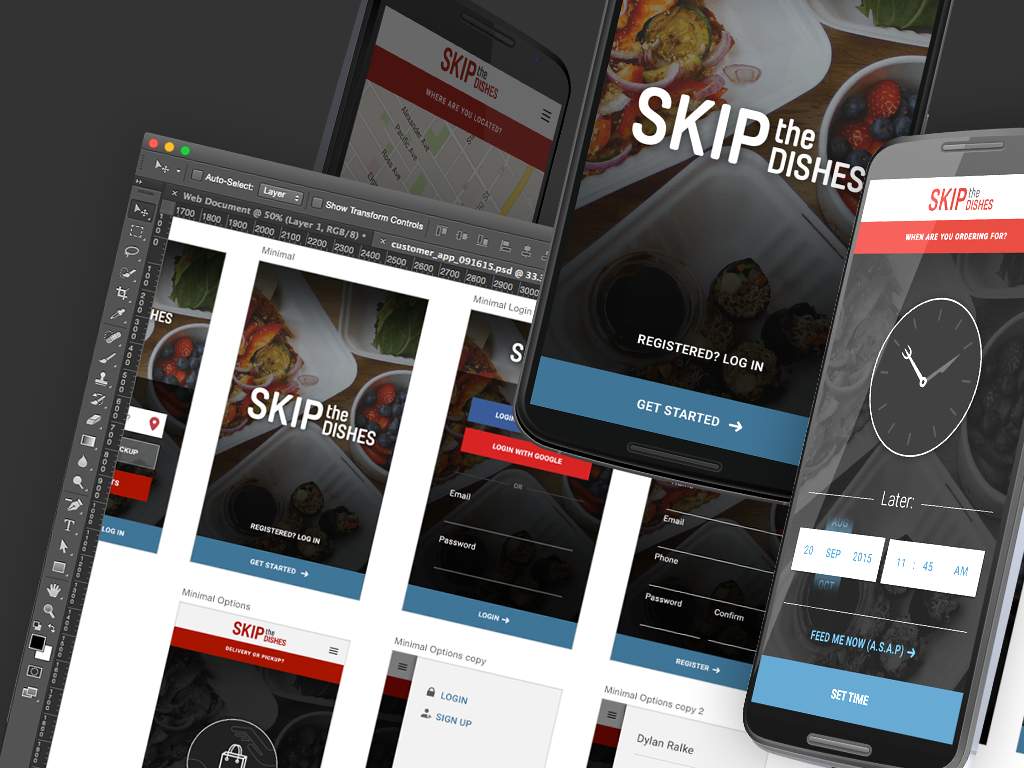
Customer Experience Improvements
The customer-facing experience felt disjointed, especially as the business expanded into new markets.
Mapping and Fixing the Courier Workflow
- Audited the full customer journey
- Redesigned parts of the order-tracking flow to better match real-world delivery states
- Created prototypes that aligned mobile and web behaviors
- Worked closely with brand & engineering to tighten the overall experience
Impact:
- Clearer order tracking, increased user trust, and a more polished feel for a product growing faster than its design originally allowed.
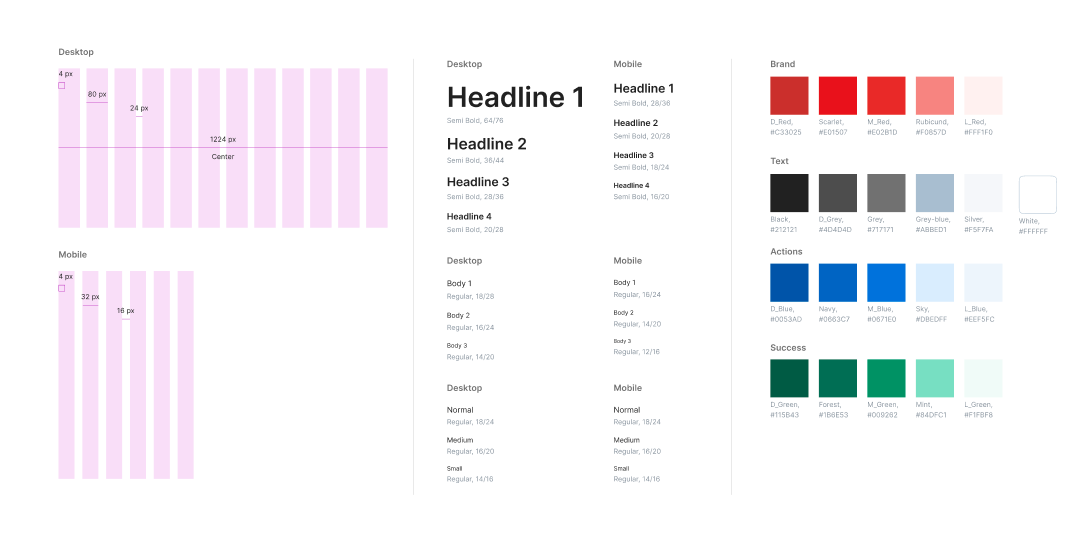
Establishing Early Design Standards
Every team was improvising UI, resulting in a Frankenstein’s monster of buttons, patterns, and inconsistent interactions.
Mapping and Fixing the Courier Workflow
Impact:
- Created early UI components and guidelines for spacing, color, and typography
- Documented them so engineers and PMs could move faster with fewer ambiguities
- Embedded into multiple product teams to model a healthier UX process
- Laid the groundwork for Skip’s future design system and massively reduced ad-hoc decision-making.
Impact
My work helped turn SkipTheDishes from a fast-moving startup with duct-taped workflows into a more stable, scalable delivery platform. By improving tools for couriers and restaurants, aligning the customer experience, and establishing UX foundations, I contributed to the company’s ability to expand nationally and operate with far more consistency.
